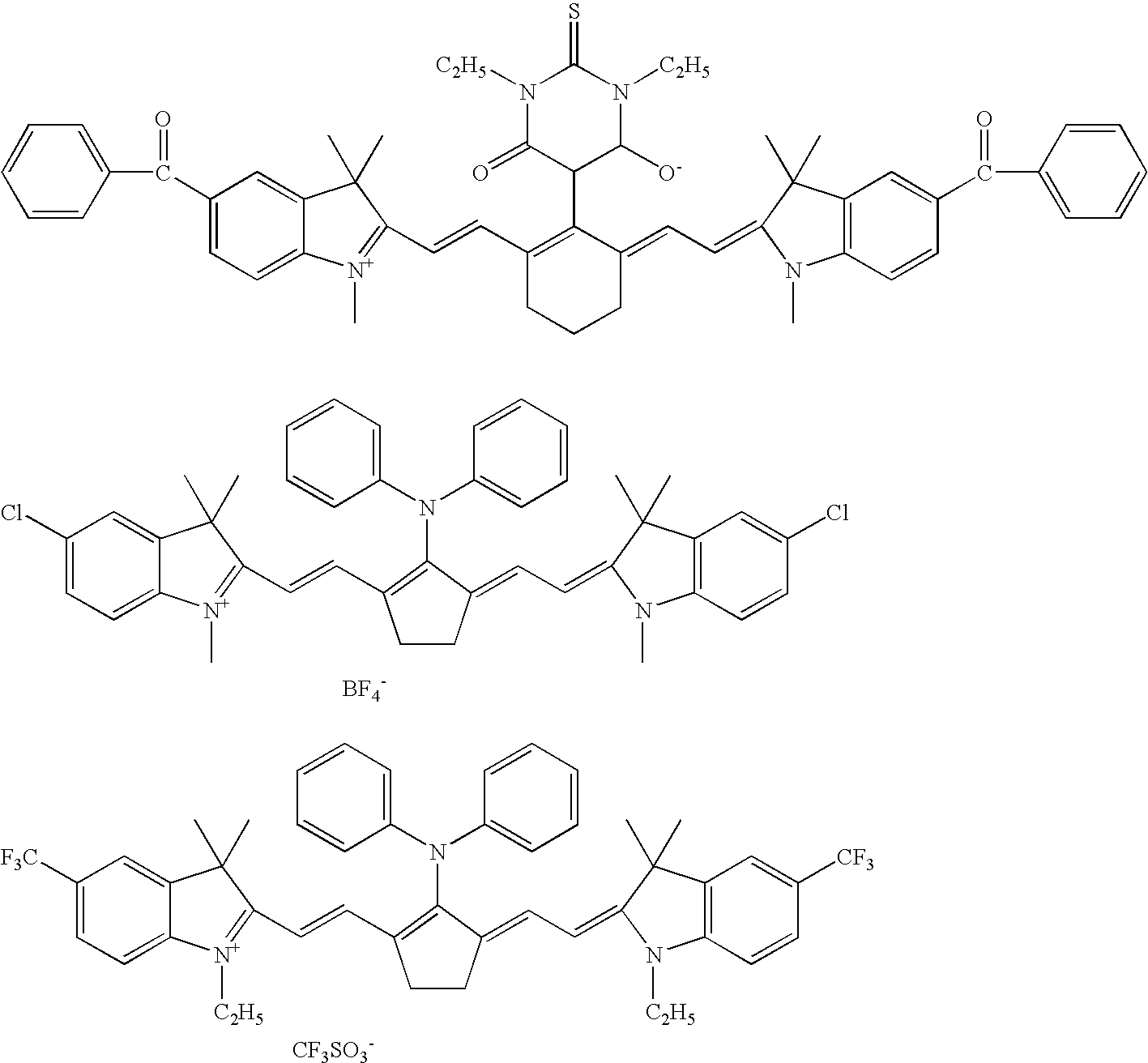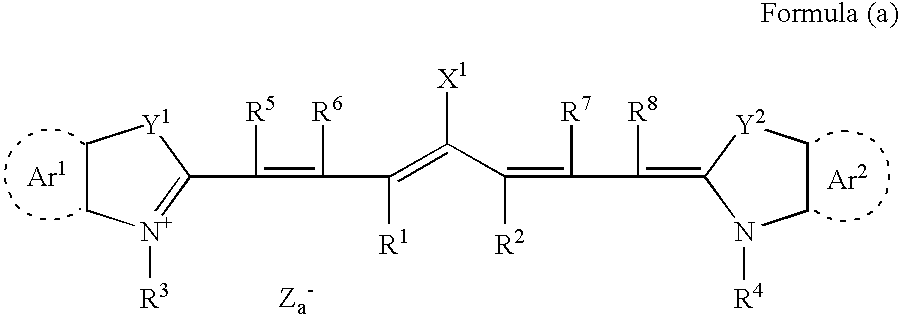Planographic printing plate precursor and stack thereof
a technology of precursors and printing plates, applied in lithography, instruments, photosensitive materials, etc., can solve the problems of smudging of printing materials, inefficiency of time for removing slip sheets, and image blanking,
- Summary
- Abstract
- Description
- Claims
- Application Information
AI Technical Summary
Benefits of technology
Problems solved by technology
Method used
Image
Examples
synthesis example 1
Synthesis of Polymer (P-1)
[0406]150 grams of Bismuthiol (2,5-dimercapto-1,3,4-thiadiazole) was suspended in 600 ml of methanol, and 101 grams of triethylamine was gradually added therein while cooling to obtain a homogeneous solution. p-chloromethylstyrene (trade name: CMS-14, manufactured by SEIMI CHEMICAL CO., LTD.) was dripped into the solution over 10 minutes and the solution was continuously agitated for three hours. At this time, a reaction product was gradually separated out. After the agitation, the solution was cooled in a water bath to have an internal temperature of 10° C., and then the product was separated by suction filtration. The resultant was washed with methanol and dried in a vacuum dehydrator for one day, thereby obtaining a compound (monomer) represented by the folloing formula at an yield of 75%.
[0407]40 grams of the above monomer was put in a 1-liter flask having four openings equipped with an agitator, nitrogen introducing tube, thermometer and reflux conden...
synthesis example 2
Synthesis of Monomer (C-5)
[0410]89 grams of thiocyanuric acid was suspended in 1.5 liters of methanol, and into which a 30% aqueous solution containing 84 grams of potassium hydrate was gradually added while cooling to obtain a homogeneous solution. 230 grams of p-chloromethylstyrene was gradually dripped into the solution in order that the internal temperature thereof remained 40° C. or less, at room temperature. A product began to precipitate shortly after the above addition, but the agitation was continued. After three hours of agitation, the product was separated by suction filtration, washed by methanol, and dried in a vacuum dehydrator for one day to obtain the monomer (C-5) at an yield of 90%.
[0411]The monomer (C-5) corresponds to the aforementioned compound described as specific example (C-5) of the compound represented by Formula (3) (specific monomer).
synthesis example 3
Synthesis of Polymer (P-2)
[0412]352.1 grams of N,N-dimethylacetamide was put in a 1-liter flask having four openings equipped with a mantle heater, thermoregulator, machine agitator, condenser, isobaric dropping funnel and nitrogen introducing tube. Into the flask, 150.4 grams (0.6 mol) of 4,4′-methylene-bis(phenylisocyanate) was slowly added while agitating at room temperature. 10 minutes after, 40.2 grams (0.3 mol) of 2,2-dimethylol propanoic acid was added at an ambient temperature. The temperature of the reaction mixture was increased up to 57° C. After that, 43.6 grams (0.33 mol) of 3-allyloxy-1,2-propanediol was added for 30 minutes. The resulting reaction mixture was further agitated for two hours to obtain a transparent solution containing the polymer (P-2). The completion of the reaction was determined by dissappearance of an infrared absorption band of isocyanate at 2,275 cm−1. The obtained transparent solution had a kinetic viscosity (Gardner-Holt) of Z1 at 40% of nonvol...
PUM
 Login to View More
Login to View More Abstract
Description
Claims
Application Information
 Login to View More
Login to View More - R&D
- Intellectual Property
- Life Sciences
- Materials
- Tech Scout
- Unparalleled Data Quality
- Higher Quality Content
- 60% Fewer Hallucinations
Browse by: Latest US Patents, China's latest patents, Technical Efficacy Thesaurus, Application Domain, Technology Topic, Popular Technical Reports.
© 2025 PatSnap. All rights reserved.Legal|Privacy policy|Modern Slavery Act Transparency Statement|Sitemap|About US| Contact US: help@patsnap.com



